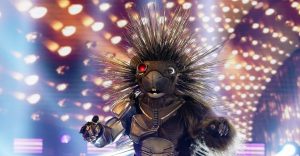Black Panther’s Brother Was Tragically Mutated By Vibranium

Black Panther had a half-brother who was mutated into a terrifying monster by Vibranium. The tale of Jakarra, the half-brother of T’Challa, played out during Jack Kirby’s legendary run on the character in the late 1970s. The storyline introduced the concept of Vibranium mutations, which has since become a major part of Black Panther lore.
Vibranium is an incredibly rare metal in the Marvel Universe. There are a few different versions, with the most popular being the type found only in Wakanda. This variety can absorb vibrations and kinetic energy, and is believed to be of extraterrestrial origin. The residents of Wakanda have used Vibranium in their everyday life, and it has enabled the country to become a scientific and economic powerhouse; their position as its sole source ensures complete control. But another, lesser known quality of Vibranium is it can alter a person’s DNA. There have been inconsistencies in how the mutations work – some people mutate permanently, others only under certain conditions, and latter-day stories tend towards the idea that these mutations are usually positive. Jakarra was one of the first people readers ever saw mutate because of the substance, and sadly it was for the worst.
Jakarra was the half-brother of T’Challa; he and T’Challa shared the same father but a different mother. Disowned by the Royal Family of Wakanda, Jakarra swore revenge. He injected himself with Vibranium, which triggered a mutation; Jakarra transformed into a brutish monster and began a rampage across Wakanda. In fact, the mutation made Jakarra into a being of pure Vibranium, making him practically impervious to any kind of weapons, a lesson the Wakandan militia learned when they tried attacking him and he turned their weapons back against them. The Panther fought valiantly, fearing that only another Wakandan could redeem Jakarra’s actions. Black Panther was only able to beat Jakarra by injecting him with an agent that destabilized his new molecular make-up, causing him to explode.

This storyline introduced the idea of Vibranium causing genetic mutations, a concept that has stuck around since, even stretching to the Panther himself by explaining the Heart-Shaped Herb that transformed him into peak human form. The risk of mutation adds another complication to Vibranium, portraying it as more of an otherworldly mineral than it later became in Marvel lore. The idea of an African nation having a unique resource unavailable to the rest of the world adds a unique political dimension to the idea of Wakanda, perhaps explaining why later stories have steered away from the more alienating implications of this classic story; positive mutations to flora and fauna act as a metaphor for how Vibranium has helped Wakanda grow as a nation, while the chance of monstrous deformity is a more fitting metaphor for tales of corruption or human overreach, as is suggested by T’Challa’s insistence on a Wakandan king addressing a Wakandan problem.
The Black Panther has always been a deeply symbolic character, but the complexity of his depiction has deepened in the last decade, and it’s interesting to take a look back at earlier stories like this one and see how the comic’s original sci-fi conceits compare and contrast with the character’s ever-evolving journey through Marvel history. Equally interesting to fans is the presence of an oft-overlooked sibling turned villain – a classic superhero cliche that most fans would guess Black Panther had never experienced.
About The Author


















